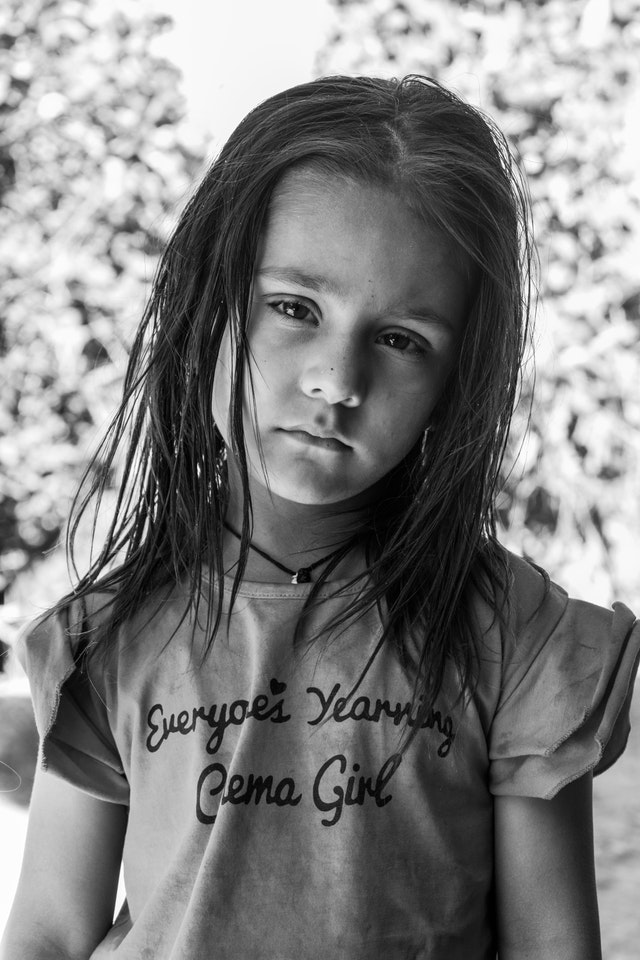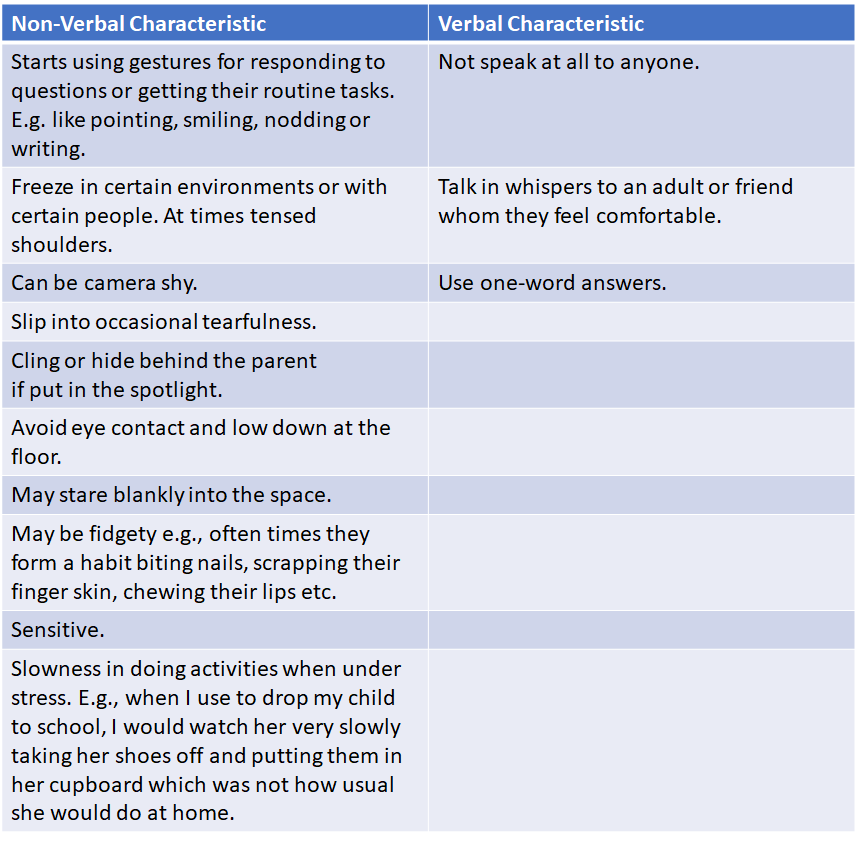
It was Christmas and we went to spend the day with one our family friends. My daughter was around 2 years old, and we noticed she didn’t utter a single word or a single sound at our friend’s house. We thought we would give it some time and when she is comfortable, she will be herself.
Initially she was a bit frozen but slowly started playing on her own but from morning till evening there was not a single sound we heard from her. At home she is a chatterbox and it made me wonder but back then I had no idea.
Signs of Selective Mutism may show up very subtly when the child is young. Some children may feel nervous in unfamiliar situations and freeze up or stiffen up while the others may seem calm outwardly and may be able to communicate non-verbally. They may exhibit some of the behaviors as below:

Yes, a child who is shy may also exhibit similar signs however with time they get better however for a SM child they continue with the similar behaviour.
How Do I Know If my child has social anxiety or Selective Mutism?
Selective Mutism is consistent failure to speak in certain situations while they can speak fluently in other situations. A Selective Mutism child will just not speak, they may only respond by gestures and shrugs at their best specifically at school or with authority figures (doctors, teacher).
Social anxiety is persistent fear in performing routine social interactions caused by significant anxiety, fear, self-consciousness, and embarrassment because you fear being scrutinized or judged by others. For e.g., they may not volunteer to answer in a class, will not turn on a camera for any school online sessions, they will never make a phone call, they may hate going out to events or big social gatherings. But if a teacher speaks to her directly the child can respond.
How do I know if my child is just shy or has selective mutism?

It is normal for children to be a bit reserved or hesitant when exposed to new environments e.g., Starting a new school. They may be quite in fits few days at school however they are still observing and taking in a lot of information. Slowly with time they will get better and start talking and getting engaged in the classroom activities in groups. These kids will be slow to warm up but will eventually get better over time.
Whereas a Selective mutism child represents quite different characteristics. At first, they may be quite and frozen but will slowly start engaging in group activities without speaking a word. They may not seem anxious outwardly and will follow the same pattern of not speaking at all. In other words, they are using their silence as their safety net.
From my experience when my daughter was around 2.5 years old the teachers said to me, “she is very quiet. We have never heard her voice. Sometimes we may hear her singing to herself in the small playhouse but if we go near the playhouse, she will completely go quiet.” I took this as she was shy but after another 6 months when teachers started asking me does she know how to talk? That is when it raised alarms to us. She was talking like a chatterbox at home but not a word at school.
Unfortunately, there is not enough awareness about Selective Mutism and what it exactly is. Schools may also not know how to effectively help the child. Sometimes it can be mis diagnosed as Autism.
Why does my child freeze in certain situations?

I always watched my SM daughter when she was 2 years old in the school playground after dropping her to school. This was the first activity in the morning for her class. I was not allowed in the school, but I could watch the kids playing in the playground. After dropping her I always stood outside the school to have a glimpse of my daughter in the playground. I always noticed her standing frozen in a corner with her head down and completely blank. This was not a normal behavior for her, and I never understood why until a year later.
In general, everyone experiences some kind of an anxiety or fear in different situations. The reaction can be either fight-or-flight. It is sometimes good to experience anxiety or fear as it helps us understand the risk. Imagine if you have seen a large snake. Your body will sense danger and fear and as a result your natural response to fear will be fight, freeze or flee(avoid). ‘This is how our body prepares us for danger.
Similarly, for the children with Selective Mutism a social environment or new people brings fear and anxiety to them. As Selective Mutism child described once that he was in room full of people, and it felt to him that all these people represented snakes. He was surrounded by snakes in a closed room. This is the height of fear a Selective Mutism child goes through every day in different situations. Generally, a SM child will respond to this by avoidance rather than aggression. Very few SM children may represent a fighting behaviour.
Their body tends to freeze when they sense fear. They may avoid all kind of verbal communication, look down, stiff body, blank facial expression, stiff body, poor eye contact and sometimes they may have tears rolling down their cheeks. Sometimes, they may have a sly smile on their face.
Less frequently a child may show aggressive behavior where they may lash out, kick, hit or hide somewhere.